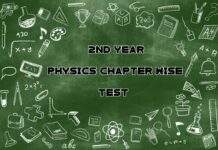Critical Analysis Of “The Bee Meeting” By Sylvia Plath
Plath’s own poetic vision is always thought provoking and impressive for the readers. It is, because her poetry is based on autobiographical touches. A deep and careful analysis of her poetry shows that her poetry is a true reflection of her own personality. Same is the case with all her poems which reflect her own life and activities. In this poem, the poetess expresses her feelings and emotions in a very easy and understandable language. Her expressed ideas are doubtlessly copious and are smartly presented in the poem.
The poetess describes the visits of different villagers who have covered themselves with precautionary measures to save from bees. Watching their strange appearance, the poetess wonders how they look in their covered faces and gloved hands. She feels exposed like a chicken’s neck. In order to secure the poetess from bee’s “dung” or bite, the secretary of the bee business dresses the poetess properly. She buttons the cuffs of her sleeves and the front of the dress. According to his instructions, she is totally covered and can hope that bees will not notice her.
With her god gifted power of observation, now, she can identify the people by their appearance. She starts thinking the man blackly clad as priest (rector) and the woman in blue coat as midwife. The people seem to her as knights in war; wearing helmets and breastplates of iron. The people around there also provide her a black veil to cover the face. Gradually, they make her like themselves. They look like surgeons and ghosts in their strange appearance.
The poetess finds herself unable to run and feels herself fixed to the ground. As she passes through the bushes, the thorns hurt her while the white bee hive looks innocent like a virgin. She further tells the readers that the queen bee seals off the cells of her children and the honey cells start humming quietly.
The poetess also tells us about the way of extracting honey from the beehive. The people smoke the bees out of the hive and bees start moving out in panic. This very act of smoking the beehive becomes a doomsday for the bees, and they start running chaotically for searching a safe place. The poetess thinks that bees would spare her mistakenly thinking her tree. The queen bee is very clever and older than other bees. She mostly resides in her cell and a curtain of wax divides her cell from others.
The fight between the honey seekers or takers and the bees; reaches on its climax and at last ends; when the poet sees the dead-body of the queen bee. The dead body of the queen bee looks like the dead body of a human being in a long white coffin.
Watching this miserable condition of the bees the poetess feels exhausted and grieved and looks like a magician’s girl who tries to survive bee’s stings. After getting: their required aim of getting the honey, the villagers remove their disguises in a victory like manner.
Critical Analysis Of “The Bee Meeting” By Sylvia Plath, As far as, this is concerned, it shows Plath’s famous concept of dehumanization. She means to say that there are certainly forces in nature and society working against human beings. Further, she has also presented a bleak picture of a woman who is being tortured, exploited, brutalized and oppressed by the cruel society.
The poetess presents herself as a chief leader of feminist movement. She becomes a mouthpiece of the female section in the society. The language used in the poem is very easy to understand. The poetess expresses her viewpoint, feelings and emotions in a very vivid, lucid and smooth manner. She depicts the miseries, troubles, worries and deteriorating conditions of women in the modern society.
What Were The Human Behavior During War By Hemingway?




























